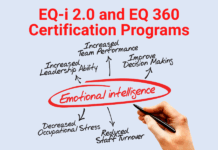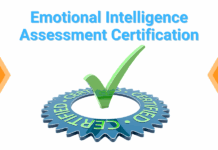
Defined: Conveys information clearly and succinctly through writing and speaking.
“The way we communicate with others and with ourselves ultimately determines the quality of our lives.” – Anthony Robbins
The flow of information and ideas through a company is its lifeblood. The accuracy and timeliness of communications leads to mutual understanding and cooperative action necessary to get things done. Insufficient communications practices squander the most precious resources for productivity—time and effective working relationships. At all levels of the organization, people must continuously listen, inform each other, share ideas, learn from one other, discuss problems and work out solutions. All efforts to progress toward shared goals must rely on leaders who are good communicators, to convey messages that are clearly understood by everyone involved. Great communicators can go farther to inspire and guide their teams to exceed expectations and fully achieve their vision.
Leaders Skilled in Communication
- Are good listeners and understand that the most important communication skill is the ability to listen
- Make instructions and expectations clear, and do not assume that people can succeed with only minimal information
- Provide positive verbal and non-verbal cues and are expressive enough to make their feelings and intent clear as well as their words
- Organize presentations and discussions in meetings efficiently, to ensure thorough coverage of central topics and prevent superfluity that can confuse or dilute key points of the meeting
- Adjusts communication content and style to meet the needs of diverse stakeholders, and encourages expression of diverse ideas and opinions
- Ask for confirmation of understanding from listeners after making complex points or arguments, asks for questions and provides clear answers
What Prevents the Ability to Communicate
- Over-informing, giving more information than desirable or than can be digested and applied
- Over-emphasis on style and under-emphasis on substance
- Dominating discussions, not listening or connecting with the audience
- Lack of commitment to facts or truth of statements
- Unfocused or meandering message
- Poor writing skills, or poor use of visual media tools
Self-Coaching Questions
- Do listeners often become distracted while you're speaking and miss portions of your message? Do they appear bored or disengaged?
- What effect does your communication content and style seem to have on the outcome of your communications with your team? Is there frequent confusion about directives or instructions?
- Do you comprehend that not everyone processes information in the same way? Or, do you speak using the same level of technical information to seasoned managers and SMEs as you do to new hires?
Tips for Communication
- Know your audience. Understand their interests, motivations and concerns, and tailor your communications style and verbiage and examples to make them relatable to those listeners.
- Learn the meanings of nonverbal signals. Be conscious of your own use of these and what they're communicating, and interpret listeners' signals during communications.
- Be respectful of the people with whom you're communicating, vs. demeaning, and respect their time and personal space. Further, be gentle and kind, vs. aggressive or demanding, and be helpful and positive in offering solutions, even with people you dislike.
- Each time you speak, focus on the words you're using, your mannerisms and your reactions to others' input. Work, even as you speak, to improve your efforts to connect with people in the most genuine way.
- Observe the ways in which others naturally express their emotions during public and private interactions. Practice overcoming the challenge of relating to others' feelings in this way, if it is not intuitive for you, and let them know how you feel as well.
- Speak carefully, clearly and succinctly, using only the amount of words needed to clearly convey your message. Avoid vague terms and descriptions that confuse listeners.
- Be honest, and avoid hyperbole or understatement that dismisses the significance of a point.
- Allow yourself to pause when you need a moment to think. Take a moment to gather your thoughts, before you continue to speak.
- Gauge your energy, measure your speech, pace yourself, and avoid expressing yourself too loudly or being excessively talkative.
- Solicit input from others. Show your interest in their opinions and feelings by asking questions. Remember that you don't need to appear to know everything. Always communicate in learning mode.
- Avoid sending signals of impatience or disinterest. Set aside distractions. Turn off your cell phone, don't fidget or glance at your watch, check your phone or computer for messages. Maintain normal eye contact. Ensure that your facial expressions are friendly and interested, and stay focused.
- Do not use silence as a tactic for gaining greater dominance in communication, but as an opportunity for others to speak and become more engaged in the discussion.
Example Goal Statements for Communication
- I will increase my communication competency by 20%, as measured by the next 360-survey.
- Within 90 days, I will present at our weekly staff meeting without saying “uh”, “um”, “you know”, “so”, or other verbal pauses
- Within 90 days I will completely stop interrupting people while they are talking, as judged by my team members and peers.
Developmental Action Plan for Communication
- LEARN: Read the article “Communicates Effectively”, in the LEADx library.
- LEARN: Read the book Everyone Communicates, Few Connect by John Maxwell (or LEADx book summary).
- LEARN: Complete the “Active Listening” course in LEADx.
- LEARN: Complete the “Engaging Presentations” course in LEADx.
- REFLECT: Review your Big 5 personality scores. How might your Extraversion/Intraversion score impact your communication style? How might your Agreeableness trait impact your ability to communicate with empathy?
- REFLECT: Write down communications habits you want to break. For example, quit saying “um” between sentences, talking too fast, failing to listen, interrupting.
- PRACTICE: Use your smartphone to record yourself in meetings and presentations. Listen back and self-coach in the areas of speed, verbal pauses, rambling, interrupting others.
- PRACTICE: Join Toastmasters.
- PRACTICE: Volunteer to write articles for your company’s blog or newsletter.
- APPLY: Use a style guide or online tool (e.g., Grammarly) to review and edit your emails and other written communication before sending it out.
- APPLY: Outline your upcoming presentations including goal, audience traits, engaging opening, major points, use of stories, and call for action.
- MEASURE: Evaluate how others perceive your development in this area with a 360-survey, or simply by asking your manager and peers for direct feedback.
Suggested Additional Resources
- Fletcher, P (2016, April 20) 6 Ways to Go From Being a Mindless Talker to Being a Powerful Communicator, Inc. Magazine, Retrieved from: https://www.inc.com/patricia-fletcher/6-steps-to-transform-from-mindless-talker-to-powerful-communicator.html
- Guffey, M, Lowey, D (2016) Essentials of Business Communication, 11th Edition, Cengage, ISBN-13: 978-1337386494, ISBN-10: 9781337386494.
- Tannen, D (1994) Talking 9 to 5, Men and Women at Work, Harper Collins, ISBN-13: 978-0380717835, ISBN-10: 0380717832.
- Treece, M, Kleen, B (1997, November 13) Successful Communication for Business and Management, Subsequent Edition, Prentice Hall, ISBN-13: 978-0134666822, ISBN-10: 0134666828.
- Thill, J, Courtland Bovee, (2017) Excellence in Business Communication (12th Edition), Pearson Education Limited, ISBN-13: 978-0134319056, ISBN-10: 978013431905.
- Morris, D (1977, January 1) Manwatching, A Field Guide to Behavior, H.N. Abrams, ISBN: ISBN-10: 9780586048870; ISBN-13: 978-0586048870.
Suggested Internet Search Terms
business leader communication, team communication, leadership communication, business communication, communication skills, how to communicate effectively, tips for business writing, tips for business emails, tips for presentations, tips for powerpoint presentations





